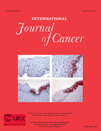Reversal of doxorubicin resistance in breast cancer cells by photochemical internalization
Abstract
Multiple drug resistance (MDR) is a problem that seriously reduces the efficacy of many chemotherapy agents. One mechanism for MDR is increased acidification of endocytic vesicles and increased cytosol pH, so weak base chemotherapeutic agents, including doxorubicin, are trapped in endocytic vesicles and exhibit a drug resistant phenotype. Treatments that selectively reverse this accumulation may therefore reverse the MDR phenotype. Photochemical internalization (PCI) is a novel technology developed for site-specific enhancement of the therapeutic efficacy of macromolecules by selective photochemical rupture of endocytic vesicles and consequent release of endocytosed macromolecules into the cytosol. This study evaluates PCI for release of doxorubicin from endocytic vesicles in MDR cells. Two breast cancer cell lines, MCF-7 and MCF-7/ADR (the latter resistant to doxorubicin), were selected. They were found equally sensitive to photochemical treatment with the photosensitiser TPPS2a (disulfonated meso-tetraphenylporphine) and light. On exposure to doxorubicin alone, the IC50 (drug concentration for 50% reduction in colony formation) was 0.1 μM for MCF-7 and 1 μM for MCF-7/ADR. After PCI (photochemical treatment followed by doxorubicin), the IC50 concentration was 0.1 μM for both cell lines. Comparable changes were seen with assay of cell viability using 3-(4,5-dimethyltiazol-2-yl)-2,5-diphenyltetrazolium bromide (MTT). On fluorescence microscopy in MCF-7/ADR cells, doxorubicin localised in granules identified as lysosomes. After PCI, doxorubicin was released into the cytosol and entered cell nuclei, as was seen in MCF-7 cells without PCI. In conclusion, PCI reversed the MDR phenotype of doxorubicin resistant breast cancer cells by endo-lysosomal release of the drug. The technique is a promising new approach to tackling the problem of MDR. © 2006 Wiley-Liss, Inc.




